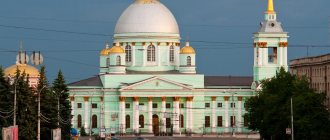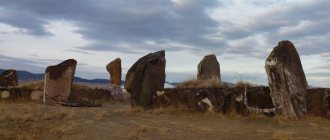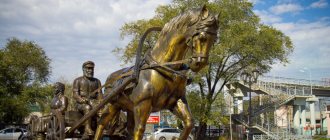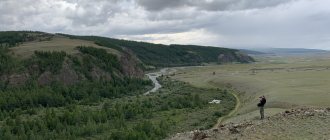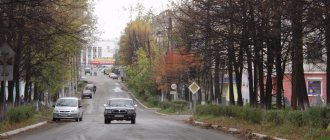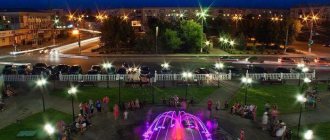- September 11, 2019
- Directions
- Molton
Kursk is one of the largest Russian cities. Where is Kursk? The city is located in the west of the European territory of Russia, 519 km from the Russian capital. This is one of the westernmost cities in the country. Kursk has a long history. It has been mentioned as a city since 1095. Now it is an important scientific, cultural, religious, educational, industrial and transport center.
The area of the city is 208 km2, and the height above sea level is 250 meters. Number of inhabitants: 448,733 people. The mayor of the city is V.N. Karamyshev.
Geography of Kursk
Many people are interested in the question: where is Kursk located, in what region? The city is located on a plain in the west of European Russia. This is the administrative center of the Kursk region. Time zone is Moscow. The climate in the city is largely determined by where Kursk is located. It is temperate continental, with an average January temperature of -6.2 °C, and July of +19.8 °C. This means that winters are relatively mild and summers are neither hot nor cold. The amount of precipitation is significant - 648 mm per year. The maximum occurs in June and July (71 and 78 mm, respectively). In the last decade, summers have become noticeably warmer, and annual temperatures have increased slightly. The amount of precipitation decreased slightly.kur
Story
The first mention of the city in chronicles dates back to 1032; according to some sources, the settlement received city status in 1095. The first mention of the city was noted in the Life of Theodosius of Pechersk, where it is described as a city with developed trade and a large number of local residents.
The first prince of Kursk was the son of Vladimir Monomakh, Izyaslav Vladimirovich. He built a fortress on the site of the modern city, which later became a powerful outpost on the border of Kievan Rus.
In 1238, the fortress city was destroyed by the Tatar-Mongols and in 1285 was attacked by the Nogai horde.
After archaeological research, it was established that the settlement was formed on the site of the current Znamensky Monastery and since 1508 it has been a border town within the Moscow State. Around the same time, the settlement was turned into a fortified city and in 1797 Kursk acquired the status of a provincial city.
In the 15th century, after the raids of the Crimean Tatars and Nogais, the city fell into disrepair. Since the end of the 16th century, after restoration, the city was the most important defensive point of the Russian state.
At different times the city belonged to the provinces:
| Since 1708 | Kyiv province |
| Since 1727 | Belgorod province |
| Since 1779 | Kursk governorship |
| Since 1797 | Kursk province |
In the 18th century, the city of Kursk and its suburbs were divided into settlements:
- Soldatskaya;
- Ochakovskaya;
- Delivery boy;
- Cherkasy;
- Policeman;
- Podiacheskaya;
- Yamskaya;
- Streletskaya;
- Pushkarnaya;
- Kozatskaya.
In the 19th century, the city of Kursk became an important industrial and business center of the country; by the middle of the century there were about 7 dozen plants and factories. There is a comfortable hotel for visitors to the city.
In 1868, Kursk received the status of a railway junction.
Church of the Great Martyr George the Victorious, Course
In 1918, Kursk became the seat of the Provisional Workers' and Peasants' Government of Ukraine.
A people's militia was formed in the city of Kursk. Here 4 regiments were assembled and several destruction battalions were organized. During the German occupation, the city suffered greatly and was liberated by units of the Voronezh Front during the Kharkov offensive operation, which took place on February 2 and 3, 1943.
The city was completely liberated on February 8, and already in July the famous Battle of Kursk or the Battle of Kursk took place near it. During the war, 245 local residents became Heroes of the Soviet Union, 85 people received the title of full Knights of the Order of Glory of the Second World War. After the liberation of Kursk, the restoration of the city began, and some nearby villages were included in its composition.
Universities opened in the city:
- Polytechnic;
- Medical;
- Pedagogical;
- Agricultural.
In 2007, the city was awarded the Order of the Patriotic War, 1st degree, for its courage and valor. Also, the city was awarded the title of “City of Military Glory”.
The Old Russian word “Kursk” was derived from the name of the Kur River, on the banks of which the city was located. The settlement is located on the territory of 2 hills, on the right bank of the Tuskar River, at its confluence with the Kur River. There is a version that the name is possibly related to the ancient word “kurya”, which means a small bay, backwater or narrow river channel.
If you believe the ancient description of the river, in the Middle Ages the Kur was deep and navigable, and only later did it become shallow and turn into a narrow backwater.
Until 2010, the city of Kursk was considered a historical settlement, but in July 2010, by order of the Minister of Culture, the city was deprived of this status.
Urban transport
Public transport in Kursk is quite diverse. There are buses, trolleybuses, trams and even electric buses running around the city. Transport of smaller capacity is represented by minibuses. During the year, urban transport transports up to 200 million people. Kursk trolleybuses have free Internet access.
The vast majority of city routes are bus routes. There are 125 of them. At the same time, there are only 5 tram routes, and 8 trolleybus routes. Gradually, minibuses are being replaced by larger units of transport equipment.
Population
As of February 2022, the number of local residents in the city was approximately 451,000. Taking into account the occupied territory of the settlement, the residential density in the area was 2,364.23 people. per sq. km. The local population in Kursk is called Kuryans, Kuryankas or Kuryanins. Today, in terms of the number of local residents, the city
Kursk ranks 44th out of a possible 1,116 Russian cities. Almost 1 million 100 people live in Kursk and its suburbs, of which 760,000 are urban residents, over 330,000 are located in rural settlements.
Since the beginning of the 21st century, the number of local residents has regularly decreased due to natural decline and the deliberate outflow of people to other areas. The data has changed slightly over the past 2 decades; there has been a slight increase in the population due to the immigration flow of people from the region and neighboring regions.
The only year in which population growth was recorded was 2015. After various programs were implemented at the regional and federal levels, the birth rate in the region increased slightly, while the natural increase in people increased.
The largest number of local residents in Kursk are Russians, their share of the entire population is about 96%. Ukrainians are in second place after Russians, accounting for 1% of the population.
The city is home to small ethnic groups, constituting about 0.3% of the population:
- gypsies;
- Armenians;
- Azerbaijanis;
- Belarusians.
Urban residents in Kursk make up about 65%, rural residents - 35%.
The following ethnic groups live in Kursk (relative to the total number of residents in the region):
| Russians | 98% |
| Belarusians | 75% |
| Bulgarians | 74% |
| Uzbeks | 68% |
| Tatars | 67% |
| Chuvash | 67% |
| Ukrainians | 65% |
The gender ratio of men and women is 45.5% to 54.5%, respectively. For every 1,000 men there are 1,198 women. At the end of the last century, mortality in the region increased and the birth rate situation worsened significantly.
In 2022, there were 4,871 divorces among 7,175 marriages. There were 6.5 marriages and 4.4 divorces per 1,000 inhabitants. A fifth of marriages broke up in the first few years, while in 80% of cases the couple was left with a minor child.
In 2022, 32,000 people came to Kursk for permanent residence, 29,000 people left the city, which implies a migration increase of 3,000. 6,000 people arrived from foreign countries in Kursk, 1,200 people moved from it.
Reviews about Kursk
People are not very active in writing reviews about this city. Many speak negatively about the character of the local residents, considering this the main disadvantage of Kursk. There is also an insufficient number of parks and a reduction in green spaces. They write about salaries that they are low, there is a problem of unemployment, lack of rights for workers. The economic situation is said to be unfavorable. They write that without connections it is difficult to get a decent job, and that life is much better in other cities.
The advantages include good opportunities for growing crops and a large number of retail outlets. They also note that in general this city is no worse than other Russian cities.
Of course, reviews reflect the personal experiences of the authors and do not guarantee that others will necessarily encounter the same problems.
Administrative division
In 1936, the city of Kursk was divided into 3 conditional districts , which are not municipalities, which changed their names on March 1, 1994. Leninsky district became Central, Kirovsky became Zheleznodorozhny, Industrial was renamed Seimsky.
In 1937, by decision of the Presidium of the Kursk Regional Executive Committee, a fourth district was formed, which was called Stalinsky. In 1956, together with the Dzerzhinsky microdistrict, it was united into the Industrial District.
Pool
The total area of the basin is 27,500 km², most of which (20,350 km²) is located in the Kursk region. This is a flat river with wide eroded valleys, rich in chalk and limestone deposits.
The river bottom is uneven, the area itself is dissected by numerous beams and holes. The shores are not the same. The height of the right steep bank in some places reaches 40 m. The left bank is replete with terraces sloping towards the riverbed, its height barely exceeds 5–8 m.
We recommend reading: The Ural River: where it flows, according to the map from source to mouth
There are swamps in the lower reaches. They occupy more than 8% of the drainage area; closed lakes, channels, creeks and islands are often found here.
In total, there are at least a thousand lakes in the river basin, the largest of which are Lezvino, Malino, Makovye and Fitizh.
Recommended reading: rivers in Abkhazia.
City in modern times
In 2022, Kursk celebrated its 985th anniversary. A tourist visiting this place for the first time will be amazed by the magnificent architecture, which accurately reflects how old the city of Kursk is.
Many architectural monuments are waiting their turn for reconstruction, thereby allowing them to preserve their original appearance. Along with ancient buildings, modern skyscrapers are being built. This contrast looks very interesting and unusual.
In universities, academies, and colleges, a special role is given to information technology. This makes it much easier for students to find and collect the information they need.
Instrument making, machine tool manufacturing, medicine manufacturing, etc. have developed greatly in the city.
General characteristics
The width of the river ranges from 10 to 100 m. The average depth of the Seim is 2–3 m: in the lowlands it becomes deeper, and shallower on the rifts. The lower reaches are replete with pits. Their depth is 10–15 meters. Pools serve as reliable shelter for fish escaping the winter cold.
In summer, certain sections of the river become shallow and the Seim can be forded.
The bottom is loamy, sandstone is found in the upper reaches, and sandy loam soils are found in the lower reaches. The riverbed is winding, with frequent and sharp bends and bends. Water flows at a speed of 0.3 - 0.7 m/s.
The source is located within 178 m, and the mouth is 112 m above sea level.
The first ice appears on the Seimas in November or December. The beginning of ice drift is the first days of April. The flood continues for over 2 months. The river replenishes its supply by melting snow, and it is also fed by groundwater.
Hydraulic structures
Kursk NPP.
On the Seimas there are dams and structures designed to generate energy: a hydrological post near the village of Mutin, a dam near Putivl, the Kursk Nuclear Power Plant.
The main hydrological post is located near the village of Mutin (Sumy region).
In 1976, the Kursk Nuclear Power Plant was erected at the Seimas; its coolant is the Kurchatov Reservoir. To do this, the river course had to be changed. The new artificial channel is located north of the old one and runs from the village of Sorokino to Makarovka, Kursk region.
Repeated attempts were made to build a system of locks on the river to regulate water levels and improve navigation; Thus, more than 10 dams were built on the Kursk-Tetkino section alone. Due to their gradual destruction, individual sections of the river near Putivl began to slowly become shallow.
To restore the water balance, in 1994 a project was developed for the construction of hydraulic structures at the Seimas. In 2010–2011 sandstone dams were built near Putivl, as a result of which water was redirected from the Lyubka River (the left branch of the Seim) along the main channel, which runs closer to the city.
Now this hydraulic structure has a significant impact on the speed of the river flow: 10 - 15 km before the dam, the flow slows down, the water loses transparency, after overcoming the obstacle, the speed increases, the channel becomes shallow, but the river becomes cleaner.
There are several small bridges across the river, including pontoon ones.
The symbol of the city and its features
Any subject of the Russian Federation has its own coat of arms, reflecting the rich and eventful history of the city. Kursk also has its own symbolism. The city's coat of arms and flag were officially approved in January 1780 and May 2000, respectively.
The coat of arms of Kursk is a shield with a blue stripe with three flying partridges on a silver background. The background color of the shield symbolizes the purity and sincerity of the city residents, and the partridge, according to one version, is the name of the city.
The flag of Kursk is an azure-colored cloth with a diagonal blue stripe with three flying silver partridges.
Each detail has its own meaning:
- The azure color of the flag symbolizes softness and greatness.
- The blue color of the stripe is the sky, the truth.
- Flying silver partridges - sincerity, kindness and the desire to move only forward.
